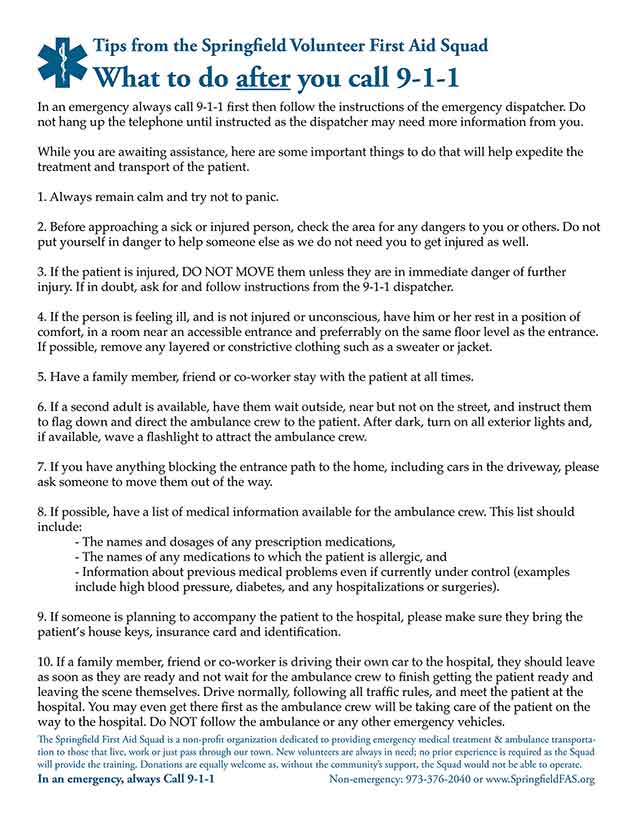After you call 9-1-1
In an emergency, always call 9-1-1 first then follow the instructions of the emergency dispatcher. Do not hang up the telephone until instructed as the dispatcher may need more information from you.
While you are awaiting assistance, here are some important things to do that will help expedite the treatment and transport of the patient.
- Always remain calm and try not to panic.
- Before approaching a sick or injured person, check the area for any dangers to you or others. Do not put yourself in danger to help someone else as we do not need you to get injured as well.
- If the patient is injured, DO NOT MOVE them unless they are in immediate danger of further injury. If in doubt, ask for and follow instructions from the 9-1-1 dispatcher.
- If the person is feeling ill, and is not injured or unconscious, have him or her rest in a position of comfort, in a room near an accessible entrance and preferably on the same floor level as the entrance. If possible, remove any layered or constrictive clothing such as a sweater or jacket.
- Have a family member, friend or co-worker stay with the patient at all times.
- If a second adult is available, have them wait outside, near but not on the street, and instruct them to flag down and direct the ambulance crew to the patient. After dark, turn on all exterior lights and, if available, wave a flashlight to attract the ambulance crew.
- If you have anything blocking the entrance path to the home, including cars in the driveway, please ask someone to move them out of the way.
- If possible, have a list of medical information available for the ambulance crew. This list should include:
- The names and dosages of any prescription medications,
- The names of any medications to which the patient is allergic, and
- Information about previous medical problems even if currently under control (examples include high blood pressure, diabetes, and any hospitalizations or surgeries).
- If someone is planning to accompany the patient to the hospital, please make sure they bring the patient’s house keys, insurance card and identification.
- If a family member, friend or co-worker is driving their own car to the hospital, they should leave as soon as they are ready and not wait for the ambulance crew to finish getting the patient ready and leaving the scene themselves. Drive normally, following all traffic rules, and meet the patient at the hospital. You may even get there first as the ambulance crew will be taking care of the patient on the way to the hospital. Do NOT follow the ambulance or any other emergency vehicles.
